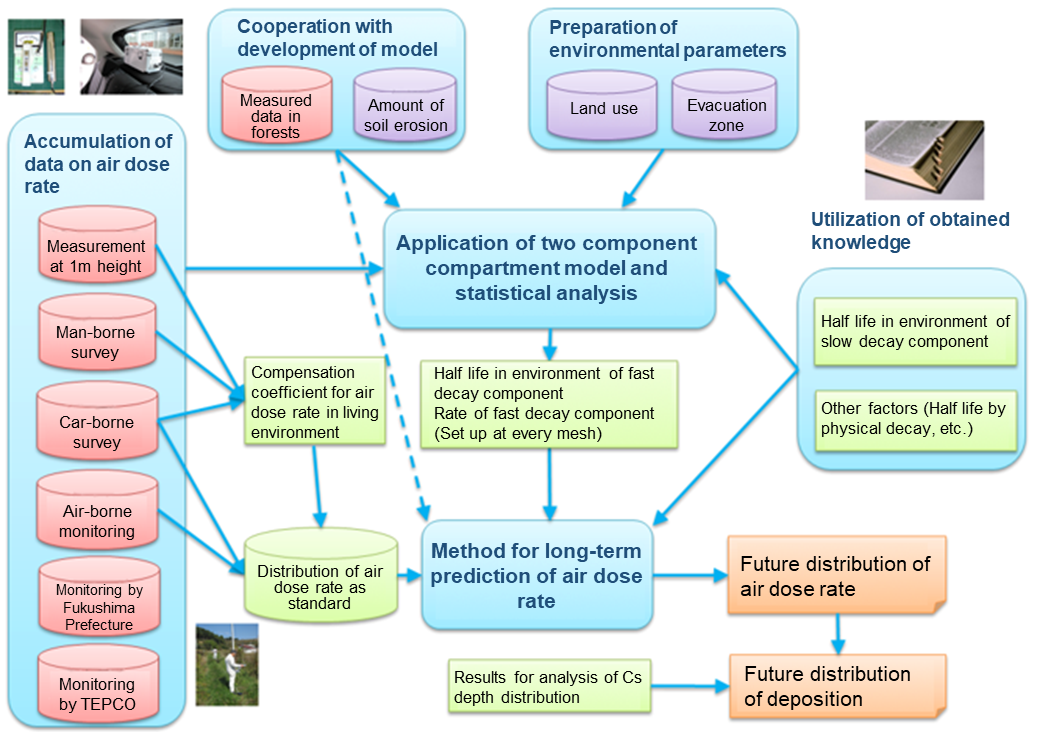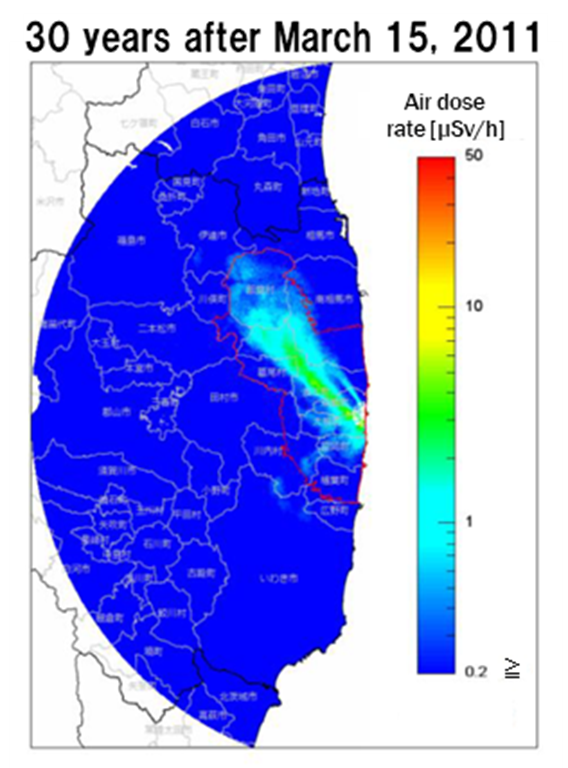Radioactivity and Air Dose Rate
(2014)
QIs it possible to predict how air dose rates in living environments will decrease in future?
ALarge amounts of data on air dose rates that have been obtained following the accident were analyzed statistically. The tendencies of air dose rate changes were clarified. On the basis of the analyzed results, future air dose rates were predicted.

Fig.1 Flowchart for prediction of future air dose rates

Fig.2 Map of predicted future air dose rates in the 80 km area surrounding the Fukushima Daiichi Nuclear Power Plant
- Future air dose rates were predicted based on an empirical equation derived following the Chernobyl Nuclear Power Plant accident. Tendencies of air dose rate reductions were predicted using an empirical equation that is approximated by combining two exponential functions (fast and slow decay components).
- Air dose rates on a 100 m mesh were predicted using best fit parameters in each 100 m mesh cell, determined on the basis of previously measured air dose rates.
- Maps for future air dose rates up to 2041 were made considering the changes in land uses and human activities.
(Maps shown here were made by JAEA based on results obtained in work for the Nuclear Regulatory Agency in 2014.)

